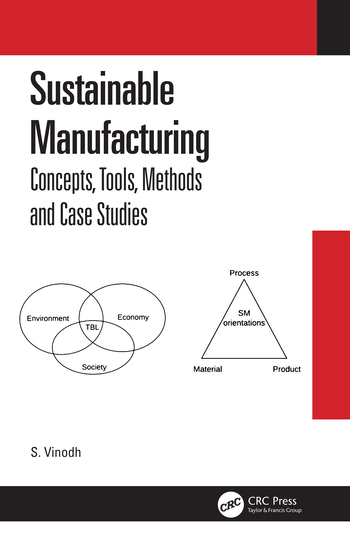On Campus: Purdue Studies the Interaction of People, Computers and Machines
Purdue's PRISM Center studies the critical role that computing technology plays in manufacturing.
Computers have transformed the plant floor over the past 50 years. Today, laptops, tablets and other handheld devices are a common sight on assembly lines. Engineers at Purdue University forecast this trend back in the 1980s, when they began to study the critical role that computing technology plays in manufacturing.
“It became clear that the power of computing and communication revolutionizes the way people work, design and manage,” recalls Shimon Nof, a professor of industrial engineering who serves as chairman of the Production, Robotics and Integration Software for Manufacturing & Management (PRISM) Center. “The key concern of industry became how to integrate people, computers and machines, or other production and service resources, most effectively.”
According to Nof, the goal of the PRISM Center is to “understand and solve problems of applying computer intelligence and IT to most effectively improve the performance and quality of industrial systems.” The center’s prism-shaped logo “[depicts] the three interfaced and integrated facets of people, computers and machines; a prism through which data and information flow and are converted to knowledge and wisdom,” says Nof.
More than 60 multidisciplinary research and education projects, funded by government and industry, have been completed since the PRISM Center was established in 1991. Current sponsors include Adept Technology, Alcoa, DARPA, Delphi, General Motors, IBM, Intel, the National Science Foundation and Volkswagen.
A dozen faculty members from different departments at Purdue University are affiliated with the PRISM Center. In addition, the organization boasts two senior researchers, eight student scholars and 28 Purdue Global Research Network scholars located around the world.
The researchers have published more than 400 papers on a wide variety of topics. For instance, Nof recently edited the Springer Handbook of Automation. His other publications include the Handbook of Industrial Robotics and the International Encyclopedia of Robotics.
The PRISM Center engineers tackle numerous research projects that relate to robotics and information technology. “In recent years, [we] have been focusing on the theoretical foundations of Collaborative Control Theory and Collaborative e-Work,” says Nof.
“Collaborative e-Work refers to computer-supported, communication-enabled operations in highly distributed organizations of autonomous systems, with the goal of augmenting human abilities at work and enabling enterprises to accomplish their goals more effectively,” explains Nof. “A good example is a global network of assembly and test facilities that are part of a supply network. Another good example is a local area network of collaborating testers in assembly lines.”
Error detection and prevention has been the focus of recent research activity. “A theory of conflict and error detection based on agents and protocols has been developed with support from several industries, such as electronics assembly,” Nof points out. “It has been extended with error detection and prediction algorithms for robotics and assembly.”
Nof and his colleagues are also studying how sensors can support advanced manufacturing and production automation. “This research has already led to cost and time reduction in assembly certification lines, by reusing facility-embedded sensor networks,” he explains.
To learn more about Purdue University’s PRISM Center, call 765-494-5400 or click http://cobweb.ecn.purdue.edu/~prism/
Editors note: “On Campus” focuses on the latest research and educational efforts at top engineering schools in the United States. For more information, contact webera@bnpmedia.com
“It became clear that the power of computing and communication revolutionizes the way people work, design and manage,” recalls Shimon Nof, a professor of industrial engineering who serves as chairman of the Production, Robotics and Integration Software for Manufacturing & Management (PRISM) Center. “The key concern of industry became how to integrate people, computers and machines, or other production and service resources, most effectively.”
According to Nof, the goal of the PRISM Center is to “understand and solve problems of applying computer intelligence and IT to most effectively improve the performance and quality of industrial systems.” The center’s prism-shaped logo “[depicts] the three interfaced and integrated facets of people, computers and machines; a prism through which data and information flow and are converted to knowledge and wisdom,” says Nof.
More than 60 multidisciplinary research and education projects, funded by government and industry, have been completed since the PRISM Center was established in 1991. Current sponsors include Adept Technology, Alcoa, DARPA, Delphi, General Motors, IBM, Intel, the National Science Foundation and Volkswagen.
A dozen faculty members from different departments at Purdue University are affiliated with the PRISM Center. In addition, the organization boasts two senior researchers, eight student scholars and 28 Purdue Global Research Network scholars located around the world.
The researchers have published more than 400 papers on a wide variety of topics. For instance, Nof recently edited the Springer Handbook of Automation. His other publications include the Handbook of Industrial Robotics and the International Encyclopedia of Robotics.
The PRISM Center engineers tackle numerous research projects that relate to robotics and information technology. “In recent years, [we] have been focusing on the theoretical foundations of Collaborative Control Theory and Collaborative e-Work,” says Nof.
“Collaborative e-Work refers to computer-supported, communication-enabled operations in highly distributed organizations of autonomous systems, with the goal of augmenting human abilities at work and enabling enterprises to accomplish their goals more effectively,” explains Nof. “A good example is a global network of assembly and test facilities that are part of a supply network. Another good example is a local area network of collaborating testers in assembly lines.”
Error detection and prevention has been the focus of recent research activity. “A theory of conflict and error detection based on agents and protocols has been developed with support from several industries, such as electronics assembly,” Nof points out. “It has been extended with error detection and prediction algorithms for robotics and assembly.”
Nof and his colleagues are also studying how sensors can support advanced manufacturing and production automation. “This research has already led to cost and time reduction in assembly certification lines, by reusing facility-embedded sensor networks,” he explains.
To learn more about Purdue University’s PRISM Center, call 765-494-5400 or click http://cobweb.ecn.purdue.edu/~prism/
Editors note: “On Campus” focuses on the latest research and educational efforts at top engineering schools in the United States. For more information, contact webera@bnpmedia.com
Looking for a reprint of this article?
From high-res PDFs to custom plaques, order your copy today!








